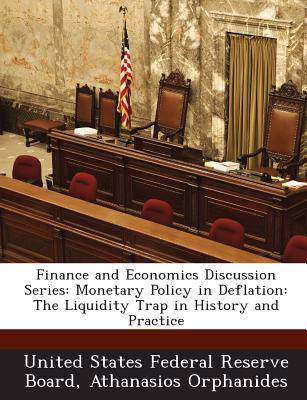
Je cadeautjes zeker op tijd in huis hebben voor de feestdagen? Kom langs in onze winkels en vind het perfecte geschenk!
- Afhalen na 1 uur in een winkel met voorraad
- Gratis thuislevering in België vanaf € 30
- Ruim aanbod met 7 miljoen producten
Je cadeautjes zeker op tijd in huis hebben voor de feestdagen? Kom langs in onze winkels en vind het perfecte geschenk!
- Afhalen na 1 uur in een winkel met voorraad
- Gratis thuislevering in België vanaf € 30
- Ruim aanbod met 7 miljoen producten
Zoeken
Finance and Economics Discussion Series
Monetary Policy in Deflation: The Liquidity Trap in History and Practice
Athanasios Orphanides
Paperback | Engels
€ 21,45
+ 42 punten
Uitvoering
Omschrijving
The experience of the U.S. economy during the mid-1930s, when short-term nominal interest rates were continuously close to zero, is sometimes taken as evidence that monetary policy was ineffective and the economy was in a "liquidity trap." Close examination of the historical policy record for the period indicates that the evidence does not support such assertions. The incomplete and erratic recovery from the Great Depression can be traced to a failure to pursue consistently expansionary policy resulting from an incorrect understanding of monetary policy in an environment of very low short-term nominal interest rates. Commonalities with the Japanese experience during the late 1990s and the inadequacy of short-term interest rates as indicators of the stance of monetary policy are discussed, and a robust operating procedure for implementing monetary policy in a low interest rate environment by adjusting the maturity of targeted interest rate instruments is described.
Specificaties
Betrokkenen
- Auteur(s):
- Uitgeverij:
Inhoud
- Aantal bladzijden:
- 40
- Taal:
- Engels
Eigenschappen
- Productcode (EAN):
- 9781288713424
- Verschijningsdatum:
- 6/02/2013
- Uitvoering:
- Paperback
- Formaat:
- Trade paperback (VS)
- Afmetingen:
- 189 mm x 246 mm
- Gewicht:
- 90 g

Alleen bij Standaard Boekhandel
+ 42 punten op je klantenkaart van Standaard Boekhandel
Beoordelingen
We publiceren alleen reviews die voldoen aan de voorwaarden voor reviews. Bekijk onze voorwaarden voor reviews.









